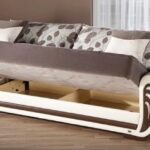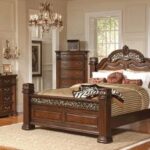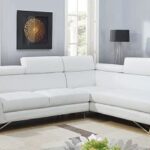How Innovators Decorate Their Homes Differently
Decorate Their Homes Differently
How Innovators Decorate Their Homes Differently

Home design is as unique as the people who occupy the space. Some people love an uncluttered, unbothered home. Some are the exact opposite, and thrive in busy spaces with loud and eclectic décor. Regardless of where your preferences lie, if you classify yourself as an innovator, you have a distinct style that can’t be matched.
Unquestionably, innovators decorate their homes differently. And whether you are one, live with one, love one, or aspire to be one, here’s exactly how they design:
Here’s the thing: innovators aren’t just thinking about themselves. They are always thinking about others and what they can do to make their space more visitor-friendly. This translates to adjustable couches, extra room, movability in different areas, and even as far as multiple options to access rooms or entry points for those who may have a disability or need additional mobility support.
An innovator isn’t just focused on what he or she needs or stuck on what was—he or she is always thinking about ways to improve, ways to be more inclusive, and ways to make a home feel less like a space and more like a welcome invitation.
2. They Lean Into Creativity
Innovators are all about creativity. This can be seen in their mismatch or hodgepodge of décor, in their unique style preferences (like a mix of technology and handiwork), and even with the events or gatherings they host in their homes.
These individuals are comfortable both embracing the trends and navigating their own preferences. In an innovator’s home, you’ll see everything from the latest technology to the most old-school heirlooms, and both ends of the spectrum are equally appreciated.
What you’ll love the most about an innovator’s home, however, is spaces that he or she has created for a unique purpose. For example, the home theatre for the movie buff or the shed-turned-studio for the aspiring artist.
3. They Aren’t Afraid to Try New Things
Innovators are known for their fearlessness in all aspects of life—from the way they do business, to their relationships with others, to even as far as the way they design living spaces.
When it comes to home design, innovators aren’t afraid to try something new (even if it’s not as popular… or even if it inevitably fails). That’s why you’ll see things that are unexpected or even downright weird in their homes. This isn’t because they’re strange people (well… sometimes). But it’s because they aren’t afraid to take risks.
4. They Don’t Compare Themselves to Others
Innovators don’t have time to waste comparing their homes (or really, any aspect of their lives) to someone else’s. They are far less focused on keeping up or keeping appearances than they are just showing up as themselves.
To them, a home is about reflecting who they are and welcoming loved ones and strangers alike into the shared space. They make their place their own, and frankly, aren’t bothered with people who don’t appreciate or recognize what makes them unique.
5. They Prioritize Functionality
When it comes to function, innovators are truly focused on taking advantage of usable space (more on this in a minute) and making sure that items, furniture, and other aspects of their homes are both useful and logical.
In an innovator’s home, you won’t see a bunch of flashy items that are just for show. Sure, you might see some of the more modern or trending items (like an eco-friendly dishwasher, for example), but that’s solely because items or appliances like this work well and serve a purpose.
6. They Make Use of All Available Space
Innovators are known for their creative minds and forward-thinking personalities. As such, they are always using the spaces they have to their advantage. For example, if there is empty wall space somewhere, chances are, they have used it for a picture wall or art display. If there is a tiny alcove in a corner, it has most likely been converted into a desk or mini office area.
Innovators aren’t afraid to embrace the quirks of their spaces and make the logical, useful, and purposeful sections and design shifts. Where others may see roadblocks to design, they see opportunities.




